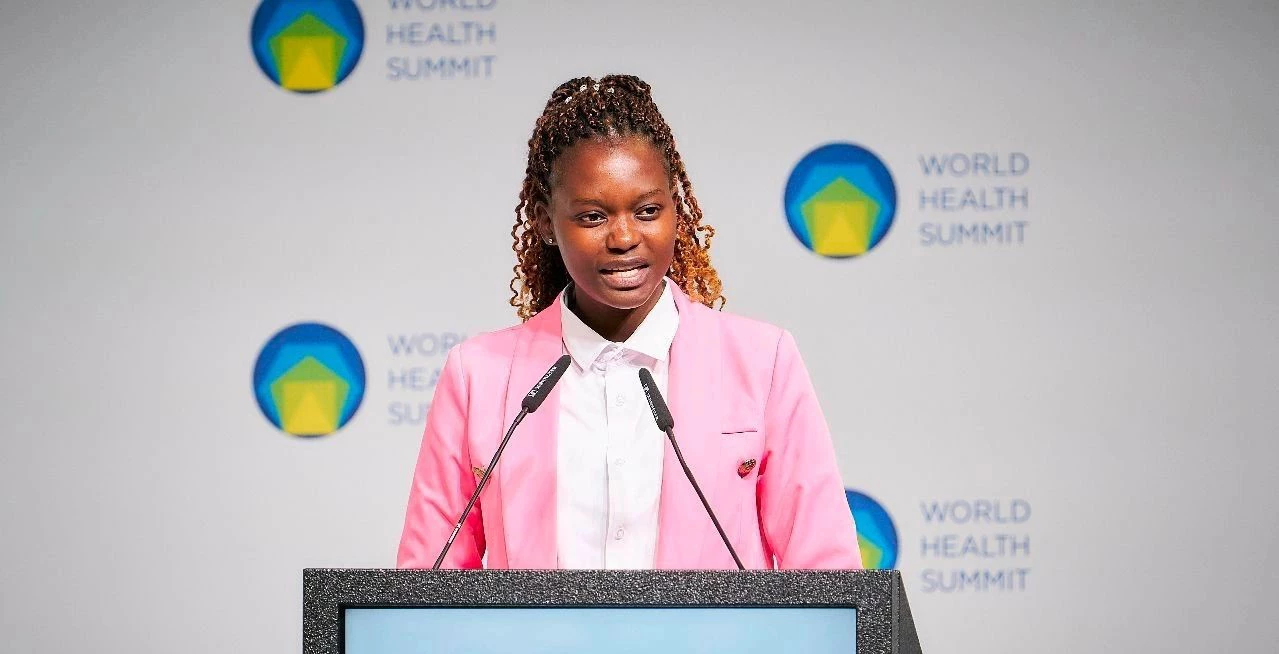 Tjedu Moyo, Executive Director Lunia Center for Youths
Tjedu Moyo, Executive Director Lunia Center for Youths
Community leaders like Tjedu Moyo, the 25-year-old founder of Zimbabwe’s Lunia Centre for Youths, are critical to advancing the health and rights of women, children, and adolescents. Tjedu is focusing on expanding access to sexual and reproductive health services, changing attitudes, and empowering young people to take on an array of challenges exacerbated by global crises, such as climate change. With support from the Global Financing Facility for Women, Children and Adolescents, Tjedu’s organization has made great strides since it was established in 2022, demonstrating the impact local efforts can have. We spoke with Tjedu about her journey to create Lunia—the center named after her mother—threats to maternal, child, and adolescent health in Zimbabwe, and the steps she and her partners are taking to try to overcome them.
1. What inspired you to start your work as an activist in Zimbabwe?
I grew up seeing my mother, a village health worker, serve as a lifeline to so many in our community. She would distribute medical supplies, organise “baby weighing days”, write referral slips, and give out contraceptives. She was a trusted advisor to many women and young people. As COVID spread during the pandemic, my mother left the house to help her neighbours and ensure that everyone had access to important information about the virus. Seeing my mother’s selfless actions taught me that this work can only be driven by passion.
Early in my life, I felt I had a role to play. My mother empowered me to mobilize young people. When the HPV vaccine became available in our community, I went out and encouraged young people to get immunized. Most health promotion work in Zimbabwe is done through a peer-to-peer model, and I decided to become a local peer educator. It is in this role that I began championing health, including sexual reproductive health and rights (SRHR), a critical need in my community, which faces a high incidence of sexually transmitted infections and teenage pregnancies.
2. Tell us about the Lunia Centre for Youths and the impact it is having in your country.
The Lunia Centre for Youths essentially focuses on the same advocacy work that I was doing as a peer educator. The difference is that it is now more structured, with the opportunity to reach more young people across Zimbabwe. In the last few months, we have trained about 350 young people who have become SRHR advocates in their own communities. These champions take on multiple roles:
First, they make their peers aware that these services are available in state and NGO-supported health centres or through NGOs. Second, they provide educational materials on safe sex practices. Third, they engage and mobilize community leaders to advocate for better services because culture and religious norms are prohibitive for some providers to offer SRHR services to young people. We also teach life skills like communication and confidence that can help young girls to be more assertive, stand their ground and call out sexual assault and early, child and forced marriage.
3. What do you see as the biggest challenges in maternal, adolescent and child health?
One of the biggest challenges is the limited availability of healthcare workers, with some clinics relying on one or two nurses serving 12 to 15 villages. In these situations, young people and adolescents seeking services may not be prioritized unless their condition is critical. This affects women giving birth, as nurses have little time to monitor the newborn’s health. A young mother told me that she realized her baby had jaundice only after she got home from the hospital. At the hospital, 40 to 50 mothers were waiting to use the device used to check for jaundice.
Another issue is creating demand for SRHR services and ensuring these services are affordable for young people. Service quality is also a challenge: health centres consistently face water shortages, hindering proper hygiene and sanitation. Just after giving birth, young mothers are sometimes given a bucket and asked to find some water outside the hospital.
All this is happening under climate change, which amplifies the existing challenges as droughts, floods and other adverse weather events threaten the health and rights of women and girls. Those emergencies disrupt access to services and trigger economic shocks and displacement that can lead to increases in child marriages, teenage pregnancies, and school dropouts. These issues are not unique to my country. They are happening all over Africa.
4. What is your view on the progress and overcoming hurdles in achieving Universal Health Coverage?
To achieve universal health coverage (UHC), we need to start with good primary health care in the poorest communities. We need to make sure there is a strong health workforce and well-equipped health centers so they can respond to community needs. We also need to focus on building health systems that are resilient to shocks and that communities are empowered to act on climate change and pandemic response.
My dream is that essential health services, including SRHR, will become widely accessible and affordable to young people. Once we prioritize these fundamental needs in our communities, then the conversation can move from primary healthcare to UHC. From where I stand, we have a long way to go. If we want to meet global health targets, countries and the global donor community must work together to improve the health and opportunities for women and young people in Zimbabwe and beyond.


Join the Conversation